Kickin' It Old-School
In week 1 of Shmuptember, I played modern bullet-hells. In week 2 of Shmuptember, I played witch-themed shmups. This week, I hopped into the Delorian and played two classic shmups from yesteryear: Raptor and Tyrian for MS-DOS. Exploring this particular branch of shoot'em up history was as interesting as it was challenging! Since these are both very tough games, I wasn't able to beat either one during my streams, but after spending a few hours with each, I feel pretty comfortable giving impressions.
Unlike previous weeks, these games were not provided by publishers for review, but instead were selected by viewers on my Twitch channel via channel points redemptions.
Raptor Call of the Shadows (PC)
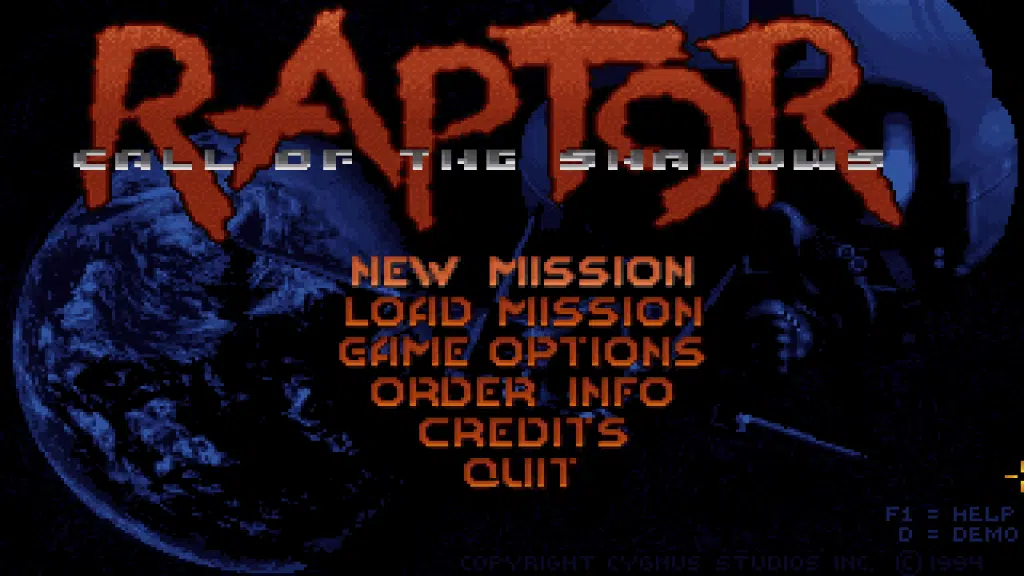
Note: There are two different versions of Raptor currently available on Steam. These impressions are based on the 1994 Classic Edition (which runs via DOS Box) rather than the 2015 Windows port.
Overview
Raptor Call of the Shadows is a vertically scrolling shmup that was originally released as shareware on MS-DOS in 1994. The game is divided into three sectors, with each being comprised of 9 levels (i.e. 27 levels total). What sets a PC shmup, like Raptor, apart from a traditional arcade-style shmup is its persistent upgrade system. Completing levels earns the player money that can be used to purchase new weapons and upgrades for their aircraft.
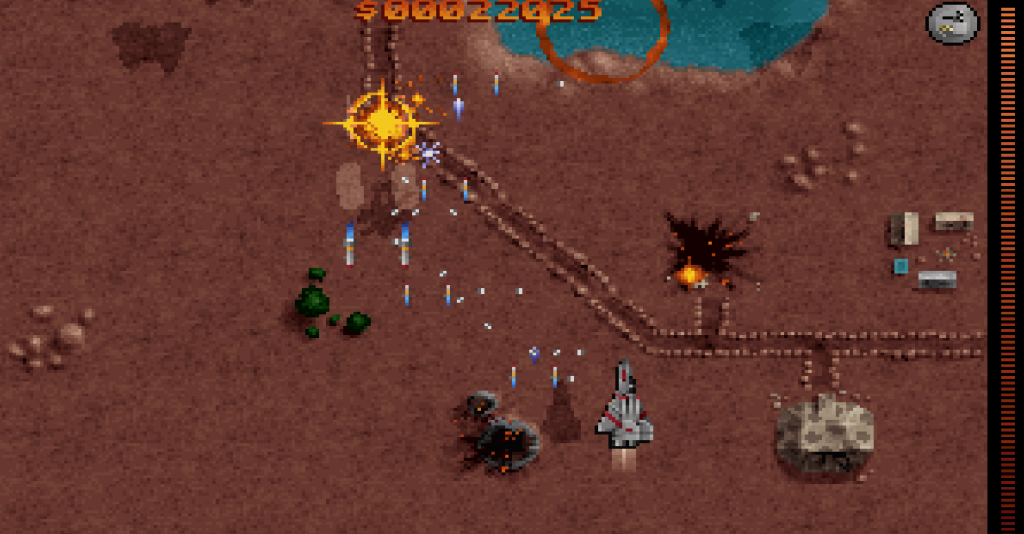
The Sights and Sounds of Destruction
The aesthetic qualities of Raptor immediately stood out to me. Compared to a lot of other shmups I've played, this game has a detailed and realistic look. I was concerned the lack of bright colors would make the action less readable but found that was not the case due to the smaller number of enemies and slower game speed compared to arcade shmups.
I also enjoyed the distinctly 90s PC sound of this game. The chiptune surfrock music of the first stage was a bop and the surprisingly deep bassy explosions made blowing up enemies satisfying. A feature of Raptor that ties these elements together is it's destructable environments. Setting off a chain of detailed explosions accompanied by a low rumble really gives the gameplay impact.
The Agony of Defeat
Regarding the gameplay, let me get this out of the way first: This game is hard! I played on Rookie (easy) and was only able to make it through the few levels of the first sector. Initially, I thought the game would be a little more forgiving than an arcade shmup since your ship has 100 hitpoints (usually arcade shmups only allow you to be hit 1 to 3 times before dying). I was wrong.
Raptor quickly makes it clear that this won't be an easy ride: the levels are exceptionally long and you only get one life per level. Unless you really fly carefully, those 100 hitpoints will be widdled down significantly by the time you make it to boss. When I managed to make it to a boss, I often found them to be short spammy encounters. In some cases, the moment the boss fully entered the screen, it would release a barrage so fierce that I'd be destroyed instantaneously, sending me all the way back to the beginning of the level.

A Turbulant Flight on a Sophisticated Aircraft
While Raptor‘s levels look nice, I found them to be very repetitive. Unlike a modern shmup, enemies didn't really seem to come in well-thoughtout patterns. This coupled with the previously-mentioned spammy bosses makes for a lot trial error gameplay. Considering how long the levels are, this structure made progressing through the game feel like a slog after a while.
On a more positive note, this game's weapon upgrade system is pretty cool. Between each level, you can buy new weapons with the money your earn; you can also occasionally find weapons within the levels themselves. What makes the weapon system interesting is that your missiles and bombs distinguish between air targets and ground targets, while your basic gun does not. For maximum damage output, you have to strategically switch between your weapons mid-level based on where the threat is coming from. Unfortunately, I didn't make it far enough into the game to be able to purchase the more advanced weapons to see what they do.

Putting Raptor Back in the Hangar
Playing Raptor Call of the Shadows was an interesting look back into shmup and PC gaming history. However, I don't think this is a game I'll be picking back up to finish. Between it's long levels, steep difficulty curve, and fairly repetitive levels, I feel like this game would burn me out long before I reach the credits. That being said, I'm still glad I tried and at $5 on Steam, it's still worth a look for the history lesson alone.
Link to stream video: https://www.twitch.tv/videos/1159060692
Tyrian (PC)

Note: There are two different versions of Tyrian currently available legally as freeware. These impressions are based on the open-source “OpenTyrian” version from GitHub rather than the “Tyrian 2000” version distributed by GoG.
Overview
As a whole, Tyrian is a very similar game to Raptor Call of the Shadows. It's a vertically scrolling shmup that was originally released for MS-DOS as shareware in 1995. Also similar to Raptor, Tyrian‘s campaign is divided up 3 episodes containing 6 to 10 levels each. Between each level, the player's ship can be upgraded with money earned from shooting down enemies. Yet another commonality is that the ship has 100 hitpoints and players only get one life to complete a level. The features that differentiate Tyrian from Raptor are that it's campaign includes a story and that ship upgrades offer greater customization.
While on the surface, Raptor and Tyrian are extremely similar games, I found the experience of playing Tyrian to be far more enjoyable. It was truly fascinating to see how only a few minor of differences between the games could lead to dramatically less frustration. Thus, these impressions will mostly focus on the points of differentiation between the two games.
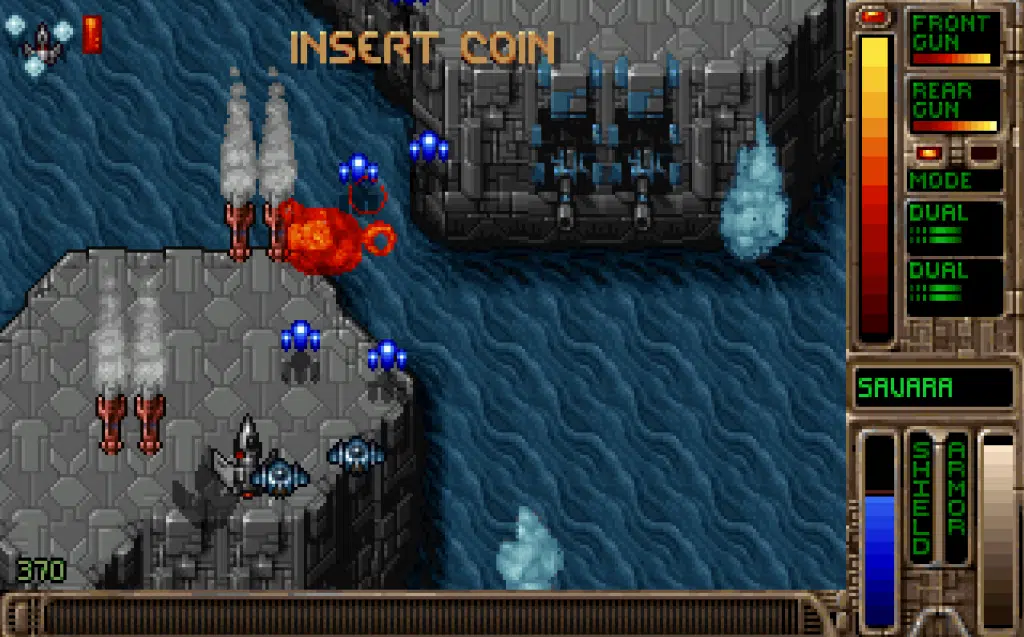
Upgrades
Tyrian‘s levels are shorter and enemies appear in patterns that feel thoughtfully designed. Boss encounters similarly felt improved with each boss feeling distinct and having recognizable behaviors I could learn. Even though I played on easy, I still died countless times. The thing is, seeing the game over screen didn't feel nearly as discouraging as it did in Raptor. In Tyrian, I knew that within a few minutes, I could get back to where I died armed with the knowledge gained from my previous defeat. It also helps that Tyrian provides more opportunities to replenish your ship's HP mid-level.
The ship customization in Tyrian is a lot of fun to play around with. Your main gun and secondary weapons come in multiple variants that can be upgraded individually. You can also upgrade your ships shields and power generator. Since the weapons and shield both put a strain on the generator, balancing your loadout and knowing when to take your finger off the trigger is important. I appreciated that your money can be reallocated between levels without penalty; this meant I could freely experiment with ship configurations and tailor my loadout to the demands of each level.
While I appreciated Raptor‘s vintage Sound Blaster music, the Sega Genesis-esque synth soundtrack of Tryian had some serious jams. That being I'm said, I'm willing to admit that this point of differentiation is more of a matter of taste than a true “upgrade”.
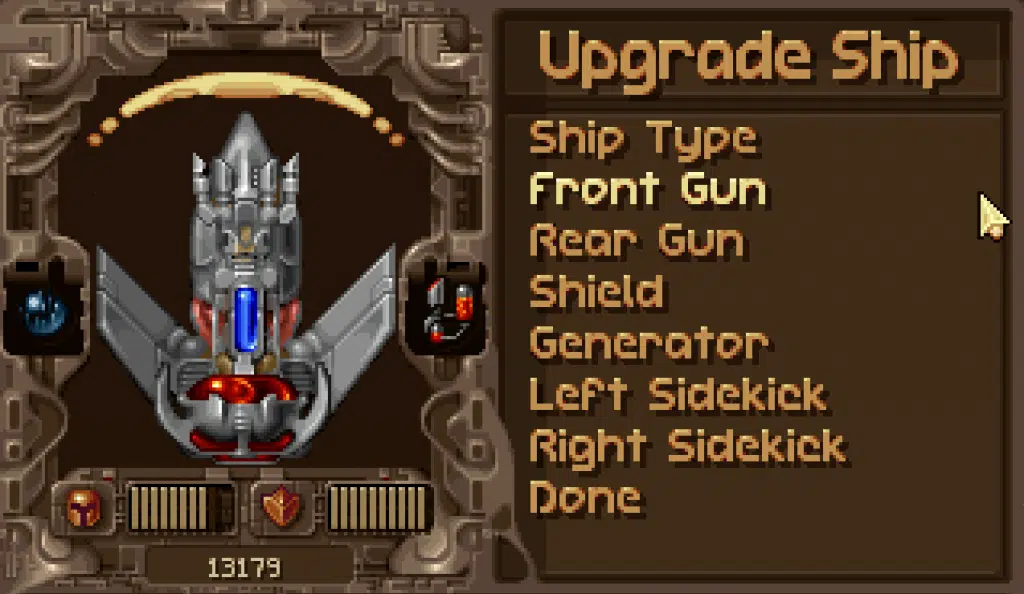
Downgrades
Tyrian has a story, but the way it was delivered failed to hold my interest. The story is told via “data cubes” which are essentially big blocks of text that can be read between levels. In general I've never really been a fan of reading lengthy data logs or in-game books. In an RPG, I understand that they can enrich the lore for players who are interested in it, but in a shmup this felt like an unnecessary break in the pace. Since you'll be customizing your ship between each level anyway, Tyrian already provides an opportunity to take a breather from the action. I quickly found myself skimming the data logs for any key info on the upcoming level but not keeping track of characters or story otherwise. Maybe a more graphical storytelling approach, as was seen in Cotton and Wings of Bluestar, would have helped.
Unlike Raptor, Tyrian had more simplistic graphics with large and colorful sprites. Tyrian also has a stylized HUD that conveys a lot of info about your ship's status. While neither of these are a bad thing on their own, it makes for a very busy-looking game screen. It didn't significantly hamper my enjoyment of the game's mechanics and level design, I couldn't help but wish everything felt a little less cramped.
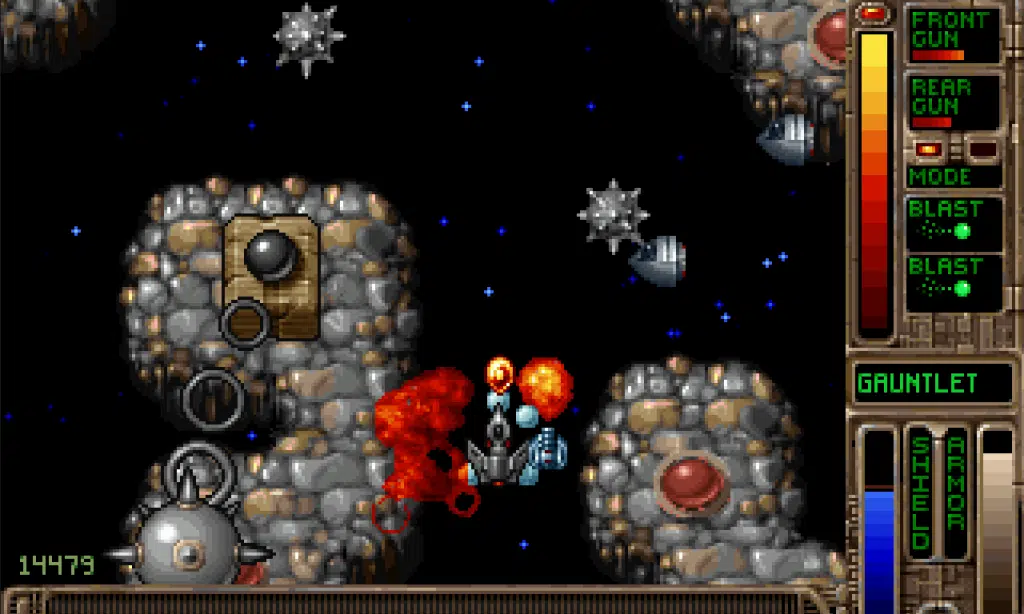
Blasting Off Again
Considering where I left off with Raptor, I didn't expect to like Tyrian nearly as much as I did. In about 3 hours, I managed to make it through two of the game's three episodes and think there's a fairly good chance I'll come back to finish it. If it sounds at all interesting, you should give it a shot; it's free!
Link to stream video: https://www.twitch.tv/videos/1159104112
Shmuptember Week 3 Closing Thoughts
This may have been the most interesting week of Shmuptember yet. Who knew that two extremely games made only a year apart could feel so different to play! The shmup genre appears to be very simple, but there's a lot of nuance there if you dig in. My stream lineup for next week hasn't been finalized yet but the focus will likely be on recent indie releases. Tune into my Twitch channel next week to see what week 4 of Shmuptember has in store!

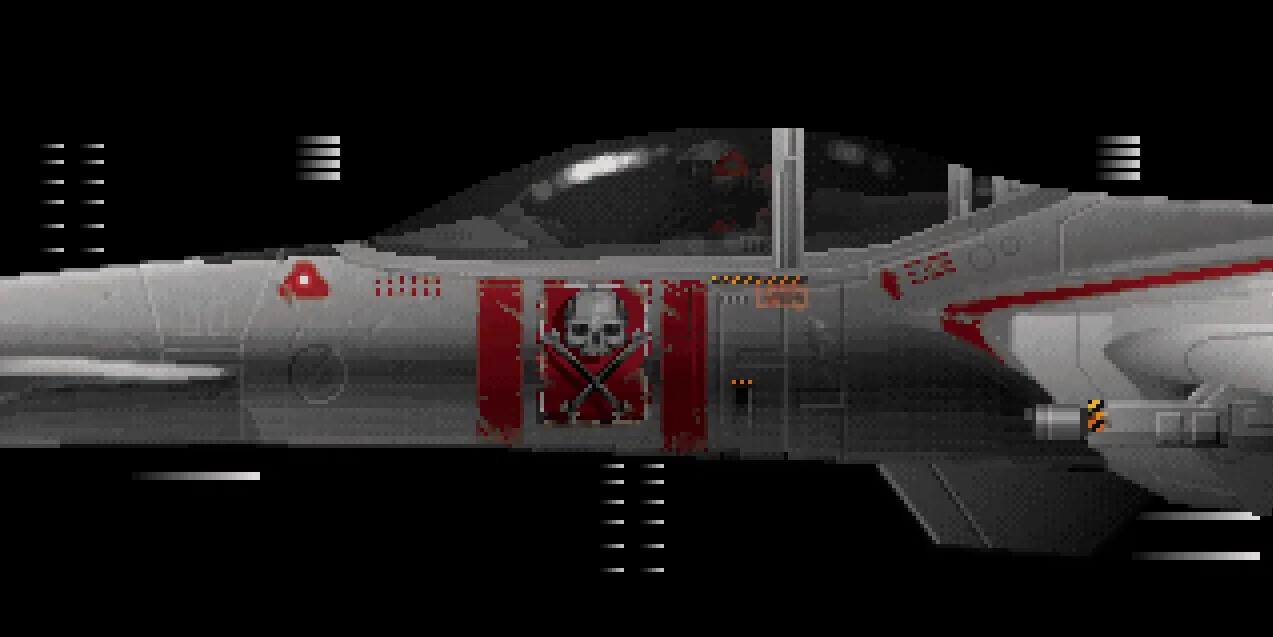
[…] One of the most positive aspects of Nova Strike is the clean pixel art. In many shmups, the artwork gets too busy, which makes it hard to keep track of your ship. Nova Strike looks sharp, and its use of contrasting colors keeps things readable. The aesthetic reminded me of late DOS shmups like Tyrian. […]